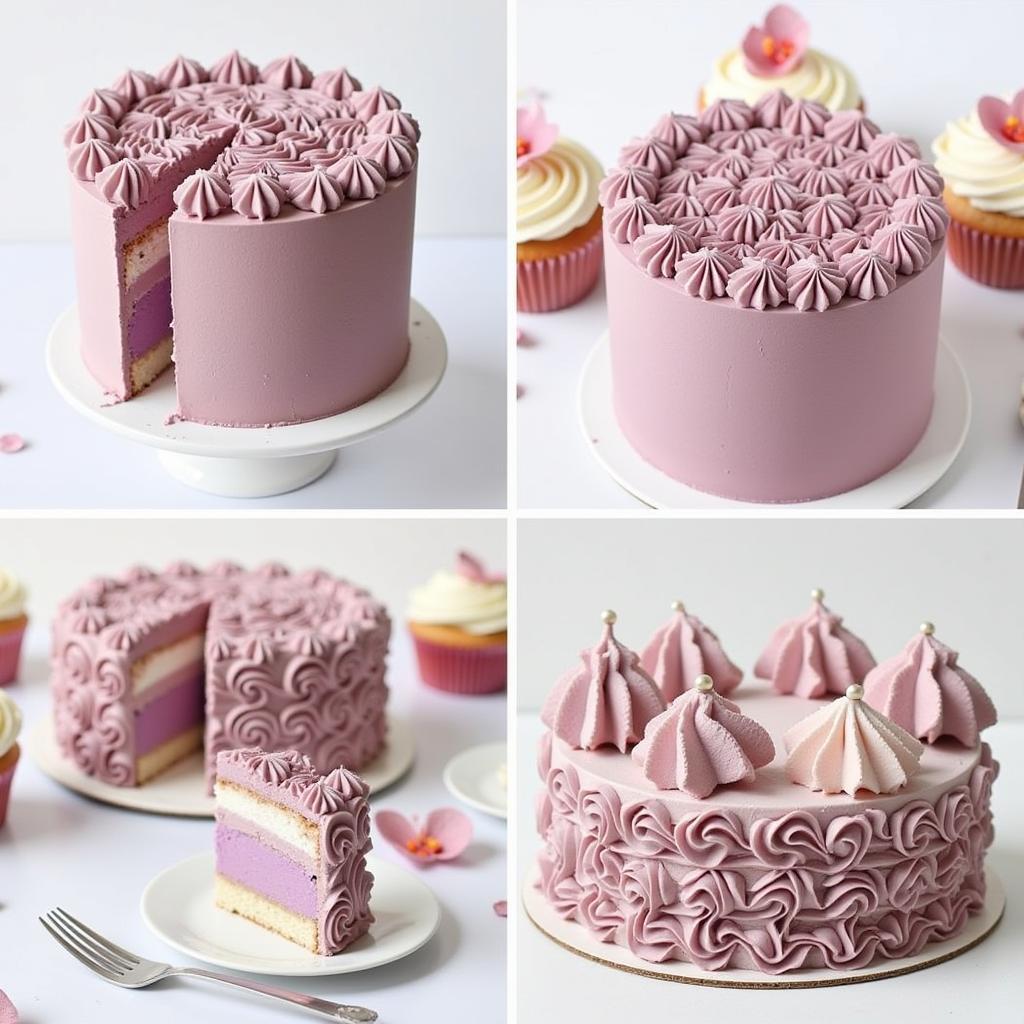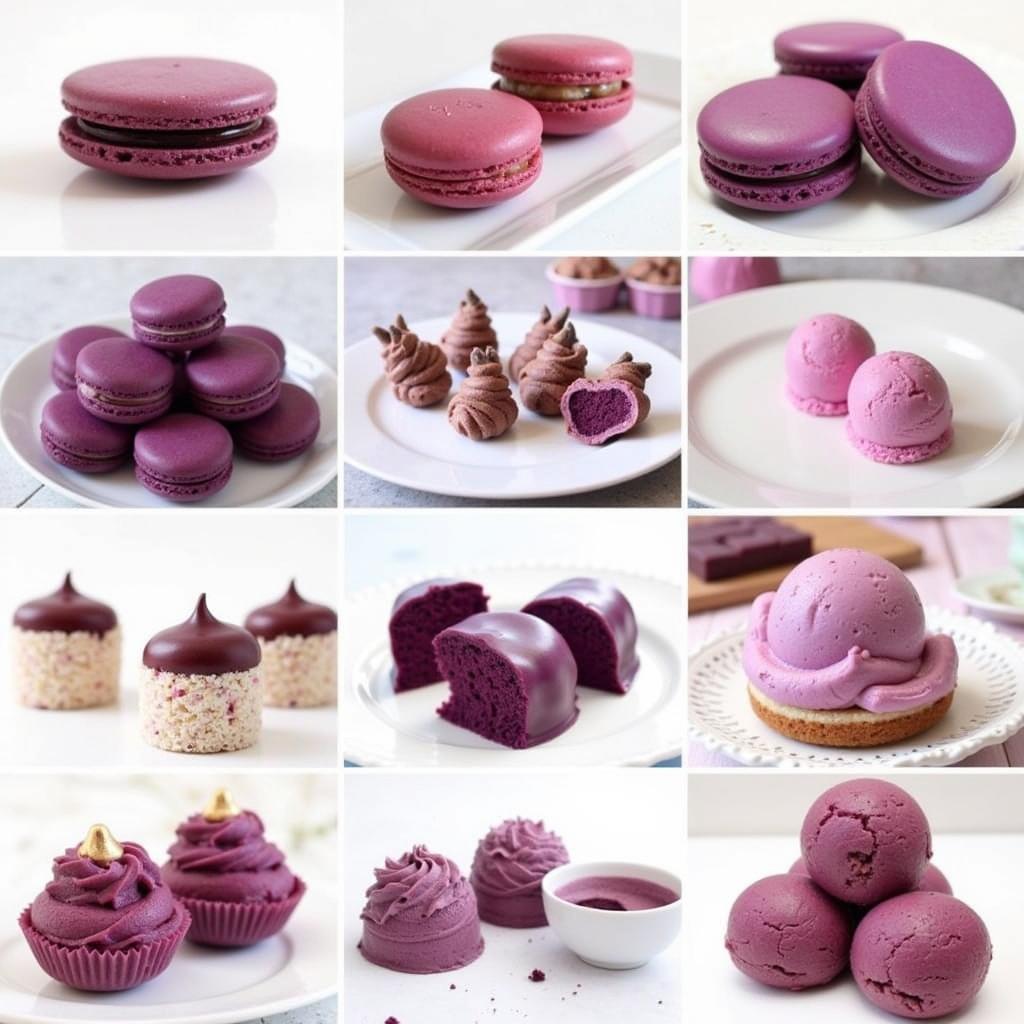Mauve Food Coloring, a delicate and sophisticated hue, adds a touch of elegance to various culinary creations. From whimsical cakes to vibrant frostings, this versatile coloring agent opens up a world of possibilities for bakers and chefs alike. Whether you’re aiming for a subtle pastel or a bold statement, understanding the nuances of mauve food coloring can elevate your baking game.
Achieving the Perfect Mauve: A Guide to Food Coloring
Mauve, a delicate blend of purple and pink, can be tricky to achieve with food coloring. Getting the precise shade requires a bit of experimentation and an understanding of color theory. Let’s explore the different types of food coloring and techniques for achieving that perfect mauve.
Types of Mauve Food Coloring
There are several types of food coloring available, each with its own pros and cons:
- Liquid Food Coloring: This is the most common type, readily available and easy to use. However, achieving specific shades like mauve can require careful mixing.
- Gel Food Coloring: Gels offer more concentrated color, allowing for vibrant hues with less impact on the consistency of your batter or frosting.
- Powdered Food Coloring: Powders offer intense color and are ideal for coloring dry ingredients like sugar or meringue powder.
- Natural Food Coloring: Derived from sources like fruits and vegetables, natural options offer a healthier alternative, though achieving specific colors can be more challenging.
 Different Types of Mauve Food Coloring
Different Types of Mauve Food Coloring
Mixing the Perfect Shade
Achieving the perfect mauve often involves combining red and blue food coloring. Start with a small amount of each color and gradually adjust until you reach the desired hue. Remember, less is more – you can always add more color, but it’s difficult to take it away.
- Start with White: Begin with a white base for your frosting or batter to ensure accurate color representation.
- Add Red: Introduce a small amount of red food coloring, mixing thoroughly.
- Incorporate Blue: Slowly add blue food coloring, a drop at a time, until the desired mauve shade emerges.
- Test and Adjust: Before committing to the entire batch, test the color on a small portion. Adjust the red and blue as needed until you’re happy with the result.
Mauve Food Coloring in Action: Creative Culinary Applications
Mauve food coloring offers a versatile palette for various culinary creations. From elegant wedding cakes to playful birthday treats, the possibilities are endless.
Cakes and Cupcakes
Mauve adds a touch of sophistication to cakes and cupcakes. Whether you’re creating a monochromatic masterpiece or using mauve as an accent color, it’s sure to impress.
 Mauve Decorated Cakes and Cupcakes
Mauve Decorated Cakes and Cupcakes
Frostings and Icings
Mauve frosting can transform ordinary desserts into stunning creations. From smooth buttercream to fluffy meringue, mauve adds a touch of elegance.
Cookies and Macarons
Adding mauve food coloring to cookie dough or macaron batter creates visually appealing treats that are as delicious as they are beautiful.
Candy and Confections
Mauve food coloring is a popular choice for candies and confections, adding a beautiful pastel hue to everything from lollipops to hard candies.
Expert Insights on Mauve Food Coloring
“Mauve is a truly versatile color, allowing for a wide range of shades from delicate pastels to deeper, more vibrant hues,” says renowned pastry chef, Amelia Dupont. “Its ability to complement both classic and contemporary designs makes it a favorite among bakers.”
“When working with mauve, it’s important to remember that the final color can be affected by the ingredients you’re using,” adds color specialist, Dr. Vivian Chen. “Testing the color on a small sample is always a good idea.”
Conclusion
Mauve food coloring, with its subtle elegance and versatility, opens up a world of creative possibilities for bakers and chefs. By understanding the nuances of color mixing and the various applications of this captivating hue, you can transform ordinary treats into culinary masterpieces. So, embrace the magic of mauve and elevate your baking to a new level of artistry!
FAQ
- What colors do I mix to make mauve food coloring?
- Can I use natural food coloring to achieve a mauve shade?
- How do I avoid over-coloring my batter or frosting?
- What are some creative ways to use mauve food coloring in desserts?
- Where can I buy high-quality mauve food coloring?
- What is the difference between gel and liquid food coloring?
- How do I achieve a consistent mauve color across a large batch?
 Creative Uses of Mauve Food Coloring in Desserts
Creative Uses of Mauve Food Coloring in Desserts
Common Scenarios and Questions:
- Scenario: My mauve frosting turned out too purple.
- Solution: Add a tiny drop of red food coloring and mix thoroughly.
- Scenario: My mauve batter is too light.
- Solution: Add a small amount of both red and blue food coloring, mixing carefully until the desired shade is reached.
Related Articles and Further Exploration:
- A Guide to Natural Food Coloring
- Mastering the Art of Frosting
- Creative Cake Decorating Techniques
Need help with your mauve creations? Contact us at Phone Number: 02437655121, Email: minacones@gmail.com or visit us at 3PGH+8R9, ĐT70A, thôn Trung, Bắc Từ Liêm, Hà Nội, Việt Nam. We have a 24/7 customer service team ready to assist you.